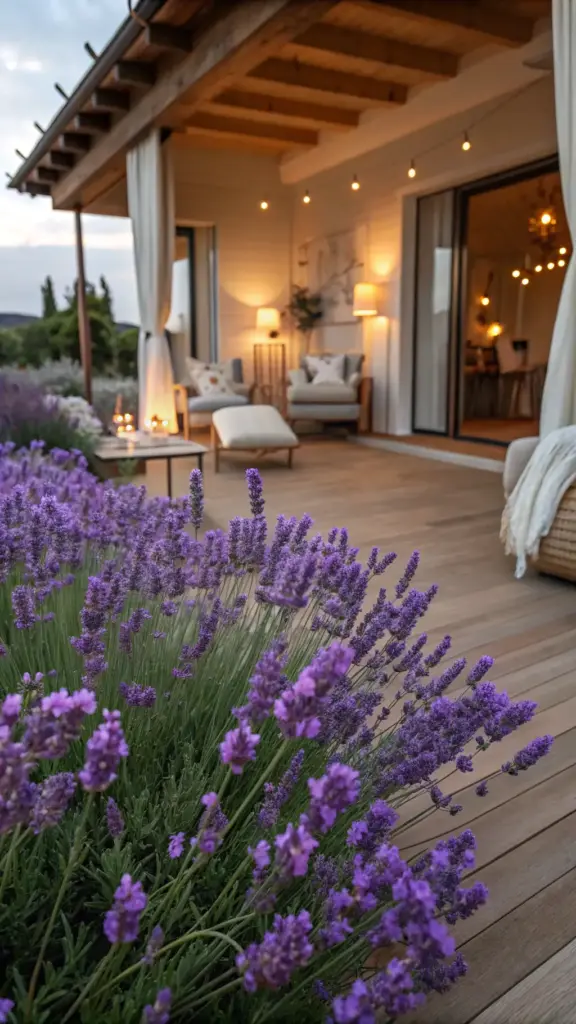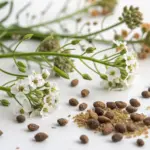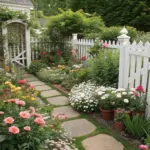2. Monochromatic Marvels: A Single-Color Paradise

Let me tell you a story. A few years back, I decided to revamp my front yard, but I was overwhelmed by all the choices—reds, yellows, blues, oh my! Then, I stumbled upon the concept of a monochromatic flower bed, and it was like a lightbulb went off in my head. Instead of trying to mix every color under the sun, I stuck to one shade and let the textures, shapes, and heights do the talking. The result? A stunning, cohesive garden that felt like a breath of fresh air. If you’re looking for a design that’s both simple and striking, this is it. Let’s break down how you can create your own single-color paradise.
How to Design a Monochromatic Flower Bed with Shades of One Color
Designing a monochromatic flower bed is all about embracing simplicity without sacrificing depth. Start by picking a base color—something that speaks to you. For me, it was purple. Once you’ve got your color locked in, think about layering different shades within that palette. You don’t want everything to be the exact same hue; instead, aim for a gradient effect. For example, pair deep eggplant tones with soft lilac and pastel lavender. This creates visual interest while maintaining harmony.
One trick I learned the hard way is to sketch out your design before planting. Trust me, winging it can lead to some awkward clumps (not cute). Lay out your plants on the ground first, stepping back to see how they flow together. It’s like painting, but with flowers!
Examples of Flowers That Work Well Together
Now, let’s talk flowers. If you’re going for a purple-themed garden like mine, here are some winners:
- Lavender: Not only does it smell amazing, but its silvery foliage adds contrast.
- Lilacs: These shrubs bring height and drama to the mix.
- Purple Coneflowers (Echinacea): Hardy, low-maintenance, and great for pollinators.
- Salvia: Its spiky blooms add vertical interest and attract bees.
- Catmint: A ground-hugging option that fills gaps beautifully.
For other colors, consider options like red tulips, pink peonies, or yellow marigolds. The key is to choose flowers that bloom at different times so your garden stays vibrant throughout the seasons.
Adding Texture and Height Variation Within a Single-Color Scheme
Here’s the secret sauce: texture and height variation. Without these elements, even the prettiest monochromatic garden can feel flat. Mix things up by including plants with different leaf shapes and growth habits. For instance, pair feathery grasses with broad-leaved hostas or spiky irises. Varying heights also make a huge difference. Place taller plants like delphiniums or hollyhocks toward the back, mid-sized perennials in the middle, and low-growing groundcovers upfront.
I once made the mistake of planting everything at the same level—it looked okay, but it lacked that “wow” factor. Lesson learned: always stagger your heights for maximum impact.
Benefits of Simplicity in Garden Design
You know what they say—less is more. A monochromatic garden proves that point perfectly. By sticking to one color, you eliminate visual chaos and create a calming, cohesive space. Plus, it’s easier to maintain since you’re not juggling multiple plant needs. And honestly, there’s something incredibly satisfying about seeing a single color shine in all its glory. It’s like giving that color its moment in the spotlight.
Another bonus? It’s beginner-friendly. When you’re just starting out, designing with one color takes the guesswork out of pairing complementary hues. Over time, you can experiment with adding accents if you want, but trust me—a simple palette never goes out of style.
Ready to Explore More Garden Magic?
If you’re loving the idea of a monochromatic flower bed, just wait until you see what’s coming next! In the next section, we’ll dive into creating a wildflower wonderland that embraces nature’s untamed beauty. Click the “next” button below to keep reading—you won’t believe how easy it is to bring a touch of wilderness to your backyard!









GIPHY App Key not set. Please check settings